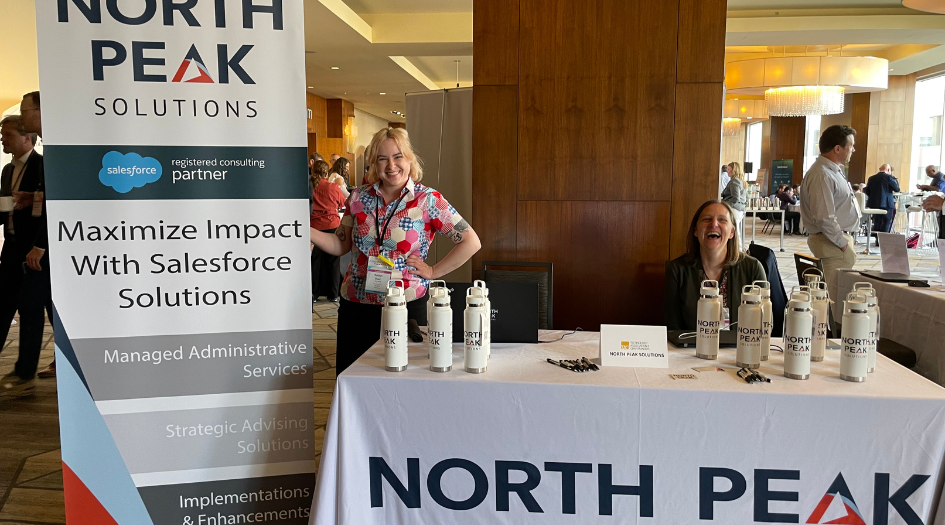
It’s now been a little over a year since Salesforce launched Nonprofit Cloud, and about 6 months since the fundraising functionality component was added. In celebration of those milestones, we wanted to take a moment to share some of the things we’ve learned about Salesforce’s newest offering for nonprofits. We’ll also provide some tips on how to make this important technology decision, and highlight one of our Nonprofit Cloud implementation clients.
Nonprofit Cloud: Weighing the Pros and Cons
As with most things, Nonprofit Cloud is a balance of good and bad – it’s not a solution that will work well for every organization, but it does offer some interesting components worth considering.
Nonprofit Cloud Highlights:
- There are new ways to display and visualize information. This includes an Actionable Relationship Center where you can see how people, organizations, programs and donations are connected in a visual web. There is also a timeline for a person’s activities as well as life event timelines that visually represent milestone life events.
- Nonprofit Cloud shifted the focus in their fundraising solution to take into account the reality that more people are donating online, either as one time or mass donations. In comparison, Nonprofit Success Pack fundraising pieces were built with more of a focus on major gifts and recurring donations.
- With the technical shift from being a package you install to simply being available on Salesforce with a license, Nonprofit Cloud now has access to some powerful data processing engines and automation tools that expand its capabilities to manage large sets of data.
Nonprofit Cloud Challenges:
- The solution has only been out for a year and fundraising about six months, which means that all of the initial system bugs have not been worked out yet. There are unexpected errors and issues that show up, mainly just because it is a new offering. This also ties into the fact that there are not a lot of best practices across the community or documentation that has been published.
- The new automation and data processing tools are complex and require knowledge that the average administrator will not have. The number of objects is greater and more complex, and the way information is stored is challenging, especially when it comes to reporting.
- If you already have a Salesforce instance but want to move to Nonprofit Cloud, the recommendation is that you move to an entirely new instance of Salesforce, which requires recreating and reimplementing Salesforce again. There is also (potentially) an increased cost of ownership – not only due to license costs, but also the need to bring in a consultant or partner because of the complexity of the underlying technology.
With all that in mind, Nonprofit Cloud is the right choice for some organizations, but not all. So how do you go about making the decision?
How to Decide if Nonprofit Cloud is Right for Your Organization
Consider Your Current CRM Situation
When it comes to deciding if Nonprofit Cloud is right for your organization, there are a number of factors to consider. First off, the decision process will be different if you are using another CRM and just starting to think about Salesforce, than if you are already using the Salesforce platform. If you’re happy with your current Salesforce solution, moving to Nonprofit Cloud is something to consider for the future, but it’s not an immediately required move. If you’re new to Salesforce and considering your options, Nonprofit Cloud may be a good fit, depending on your organizational needs, structure, etc.
Use Your Organizational Values and Workflow Needs as a Guide
On a larger scale, the core of this decision is the same as any technology decision – understand your values and processes and how your technology supports your work and mission. This has always been North Peak’s approach, and it’s especially helpful when trying to cut through the noise and unknowns around Nonprofit Cloud.
When you know what you value – efficiency, design, cutting edge technology, accessibility, stability – you can measure any decision against the alignment to those values. Then if you understand the processes that are core to your work, you can measure a tool by how well it lines up. Without this first step you are blindly choosing based on marketing and demos that may or may not align with who you are as an organization. Or, you’re simply looking at a comparison of features without being able to ground those elements in the day-to-day operations of your organization.
Additional Considerations When Deciding on Nonprofit Cloud
As you navigate the process of choosing a new Salesforce CRM, we wanted to share some additional considerations that are worth keeping in mind when weighing this important decision.
- Is the solution manageable within the resources of your organization? Nonprofit Cloud is new and more complex than Nonprofit Success Pack so there is more to learn and less best practice documentation available to call on. Because of that you will most likely need to have a seasoned System Administrator on staff or contract for Managed Administration Services.
- Are connections or integrations available for the tools that your organization needs? Nonprofit Cloud is new, so not all tools are available to connect with. If you’re on a specific online donation platform or email marketing tool, you may need to confirm that connecting with Salesforce is achievable without building your own custom connection.
- What are the risks associated with choosing Nonprofit Cloud over Nonprofit Success Pack, or vice versa? And do the benefits outweigh those risks? What is your organization’s appetite for being on the cutting edge of new technology?
There are risks when it comes to being on the cutting edge or being the first to decide on a best practice, but for some organizations and people, being an early adopter is interesting and exciting.
Implementing Nonprofit Cloud: Client Case Study
3C (Create, Collaborative, Catalyze) Data Alliance
The 3C Data Alliance is a coalition of 14 + Creative Youth Development organizations with a shared goal of developing and utilizing a collaborative CRM, built on the Salesforce platform. Collaborative CRM’s are a great option for organizations with similar purposes and goals to use a shared system to track data and measure impact. The CRM can also enhance collaboration between participating organizations, help program staff pool resources, save on staff admin time, and provide important insight for leaders who need to make strategic decisions.
In 2022 we began to work with members of the 3C Data Alliance team on a project discovery that would determine the best approach for developing a truly collaborative CRM. To achieve this goal, we worked with a team of subject matter experts from across the Creative Youth Development spectrum. The discovery process took several months, and included surveys, collaborative discussions, current technology reviews and feature prioritization efforts. The result was a complete roadmap for building a Collaborative CRM on the Salesforce platform.
The 3C Data Alliance has been inspired and thoughtfully supported by the team at North Peak Solutions. Our process has been generative and effective for a number of reasons. First, we are centering our work on two core values: youth voice and race equity. The North Peak team has designed a development and feedback process that centers these values, and the Nonprofit Cloud solution will empower us to do the kinds of reporting we need and want to do, while allowing young people access to their own data to aid in telling their stories after they leave our programs.
With the discovery complete it was time to decide which Salesforce option to go with. All members of the team agreed that it is a priority for the solution to provide a user interface that is both inviting and intuitive to use. Additionally, the main goal of the CRM is to manage programs and attendance across the Creative Youth Development sector.
Given those requirements, Nonprofit Cloud seemed like the right approach, but there were additional considerations centered around the cost of ownership for each organization, plus the risk of building a package on a new tool. Collaborative discussions were a big part of the decision making process, and at the end of the day, the value of building on a tool that aligned with 3C’s values and process outweighed the potential risks.
We believe that the Nonprofit Cloud solution will help us manage and develop our programs more effectively, while positioning us as a community advocate for powerful learning approaches grounded in youth voice, equity, creativity, social justice and youth development. We believe that this solution is well suited to being iterative- the system will grow and deepen, becoming more useful and effective over time.
As you can see from the case study, the decision to choose Nonprofit Cloud was not made lightly. It involved discussion and internal review of team needs and workflows, a strong guiding vision to continuously refer back to, and a clear idea of the gaps that Nonprofit Cloud would fill.
Next Steps
Deciding whether or not to move forward with Nonprofit Cloud is an individual decision for each organization, especially in these early stages of the tool. By being thoughtful and understanding your organizational needs and values first, you are more likely to make the right-fit technology decision at the right time. For more information on Nonprofit Cloud or to discuss your implementation needs, please contact us.
About North Peak
North Peak provides Salesforce-based services for nonprofits, foundations and the affordable housing sector who want to utilize the power of high-functioning CRM and GMS platforms. We achieve this through a holistic set of services, tailored to the needs of our clients.
Blog: Comparing and Selecting the Right Salesforce Grant Management System
Planning, preparation and strategy will help organizations choose the right Salesforce grant management system to meet their needs.
Schedule a Free Consultation
If you’re considering implementing Salesforce or need help with Managed Administrative Services, or simply have questions about how to transform your organization’s data practices, we’d love to talk! Contact us for a free 30 minute call.



